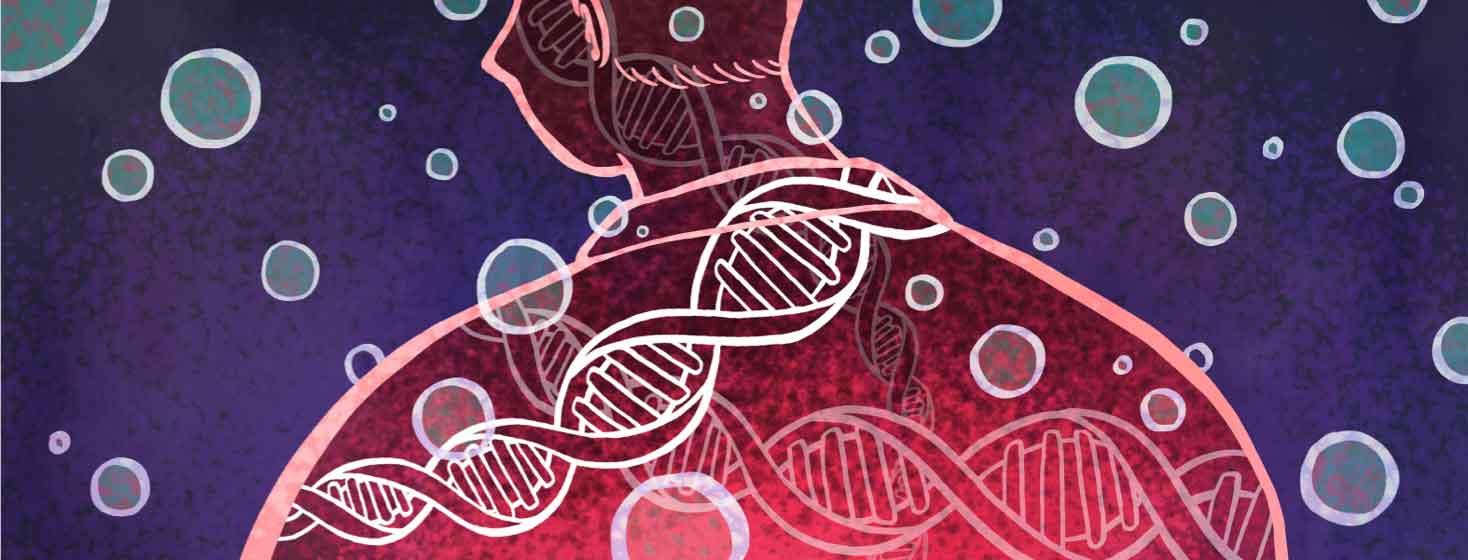Gene Therapy for Hemophilia
Reviewed by: HU Medical Review Board | Last reviewed: December 2022 | Last updated: December 2022
For more than 20 years, gene therapy has been evolving as a treatment option for people with hemophilia. Hemophilia is a rare genetic disease in which blood does not clot properly. Gene therapy introduces new genes to a person’s cells to help it fight a disease.1,2
Gene therapy may make a cure for hemophilia possible by replacing a gene that helps the blood clot. This is exciting news for those with hemophilia who depend on factor replacement therapy given by regular intravenous (IV) infusions.1-4
How does gene therapy work for hemophilia?
Gene therapy for hemophilia places a new, correct version of the clotting factor gene into the cells of a person’s body. The clotting factor gene helps their blood to clot after an injury.2,5
Clotting factor are proteins that work to stop bleeding and form a blood clot. In people with hemophilia (types A and B), the clotting factor gene does not work properly or is missing because it has changed (mutated). This leads them to bleed for a long time after an injury. Some people with severe hemophilia can bleed without a known injury.2,5
Giving people with hemophilia new genes through gene therapy tells their cells how to make clotting factor. The new genes are brought into the body using a viral vector. A viral vector is a deactivated virus that doctors use to gain access to the body’s cells during gene therapy.2,5
A viral vector does not expose you to the virus and does not make you sick. Instead, it lets the new genes into your cells. Once the new genes are in your cells, they can begin to produce clotting factor.2
What are the types of gene therapy?
There are 3 kinds of gene therapy used for hemophilia:2
- Gene transfer – During gene transfer, a doctor puts genetic information into a viral vector to get inside a person’s cells. The cells can then begin producing clotting factor.
- Gene editing – This type of therapy edits the gene that is not working properly. “Fixing” the gene enables the cells to start producing clotting factor.
- Cell therapy – This is when new cells are implanted into a person, which helps them make their own clotting factor.
Currently, there is only 1 gene therapy drug that has been approved by the US Food and Drug Administration (FDA) to treat people with hemophilia. It is called Hemgenix (etranacogene dezaparvovec). Hemgenix is a one-time gene therapy drug that is given as a single dose by IV infusion.1
Side effects of Hemgenix include:1
- Increase in liver enzymes
- Headache
- Mild infusion-related reactions
- Flu-like symptoms
These are not all the possible side effects of Hemgenix. Talk to your doctor about what to expect when taking this drug. You also should call your doctor if you have any changes that concern you when taking Hemgenix.
Who can get gene therapy for hemophilia?
As of December 2022, Hemgenix is approved to treat only people with hemophilia B. About 15 percent of people with hemophilia have hemophilia B. Hemophilia B mostly affects men.1,2
There are other hemophilia type A and B gene therapy clinical trials happening. Talk to your doctor if you are interested in learning about these studies. Current studies are looking at men who:2-4
- Are over 18 years old
- Live with severe hemophilia type A or B
- Have no liver problems
- Have no antibodies that would resist the viral vector
- Do not have HIV or other major health problems
Evidence for gene therapy
Gene therapy has been shown to help clotting factor increase to near-normal levels and reduce the need for factor IV infusions. But experts do not know how long these results will last. Data show that the results tend to wear off over time. They can also vary from person to person.2,3
More research is being done to understand how gene therapies can help people with hemophilia types A and B. Several clinical trials are currently underway to find out which type of gene therapy has the best results. Experts agree that more research is needed.3,4
Overall, results of gene therapy are promising. Experts are hopeful that more of these treatment options will be available in the future.2,3,5
What are the risks of gene therapy for hemophilia?
Like any new type of treatment, gene therapy for hemophilia comes with some risks. These risks can include:1-4
- Liver damage
- Immune system reaction
- Unsuccessful gene transfer
These are not all the possible risks associated with gene therapy. Talk to your doctor about what to expect when getting gene therapy. You also should call your doctor if you have any changes that concern you when getting gene therapy.
Other things to know
At this time, gene therapy for hemophilia is not approved for children under the age of 18. Gene therapy is not recommended for people with hepatitis. And for those with HIV, the condition must be controlled before beginning gene therapy treatment.2
These treatments are also extremely expensive. The FDA-approved drug Hemgenix costs millions of dollars.6
Before beginning any gene therapy treatment, tell your doctor about all your health conditions and any other drugs, vitamins, or supplements you take. This includes over-the-counter drugs. Talk to your doctor to learn whether gene therapy is right for you.

Join the conversation